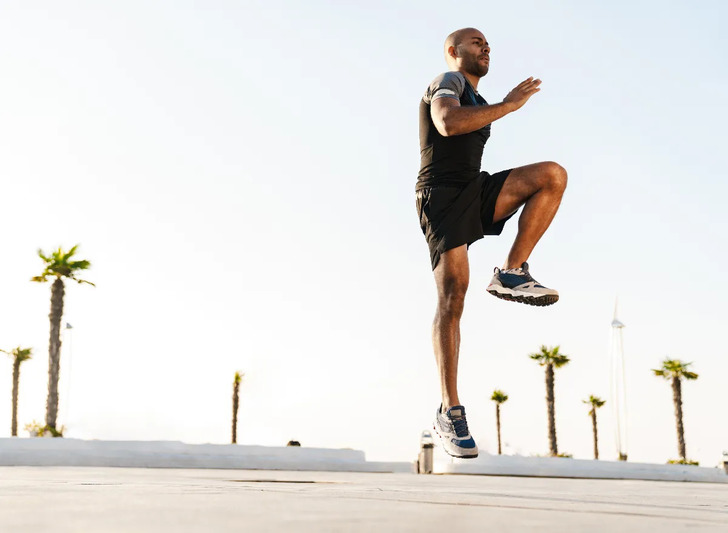Jumping exercises offer an excellent way to improve your overall health, strengthen muscles, and shed extra pounds. Whether you’re a novice looking to start your fitness journey or an experienced athlete seeking to elevate your workouts, jumping can be a versatile and effective option for you. In this article, we’ll explore how jumping can help you on your health and fitness journey and provide tips for both beginners and advanced jumpers.
The Benefits of Jumping
Jumping, whether through various forms of exercises like rope jumping, plyometric jumps, or trampoline workouts, offers numerous health benefits for individuals of all fitness levels.
- Cardiovascular Fitness: Jumping gets your heart rate up, making it an excellent cardiovascular exercise. It enhances blood circulation, helps reduce the risk of heart disease, and boosts your overall endurance.
- Calorie Burn: Jumping is a calorie-torching exercise. A 30-minute jumping session can help you burn a significant number of calories, aiding in weight loss.
- Leg Strength: Jumping engages your leg muscles, such as quadriceps, hamstrings, and calves, helping to strengthen and tone them.
- Balance and Coordination: Many jumping exercises improve your balance and coordination, which can be particularly beneficial for older adults.
- Bone Density: Jumping is considered a weight-bearing exercise, which can enhance bone density and reduce the risk of osteoporosis.
Now, let’s delve into tips for both beginners and advanced athletes interested in incorporating jumping exercises into their fitness routines.
Jumping Tips for Beginners
- Start Slowly: If you’re new to jumping exercises, begin with a manageable pace. For example, start with 5-10 minutes of rope jumping per day and gradually increase the duration as your stamina improves.
- Proper Footwear: Invest in good-quality athletic shoes with ample cushioning and support to protect your feet and reduce the risk of injury.
- Proper Form: Maintain a good posture with your back straight and knees slightly bent. Land softly on the balls of your feet to minimize impact on your joints.
- Warm-Up and Cool-Down: Always warm up with some light stretching and a few minutes of brisk walking before jumping. Cool down with gentle stretches to prevent muscle soreness.
- Variety: Experiment with different jumping exercises, such as high knees, side-to-side jumps, and single-leg hops, to prevent boredom and target different muscle groups.
Jumping Tips for Advanced Athletes
- Increase Intensity: Advanced jumpers can intensify their workouts by incorporating high-intensity interval training (HIIT). This involves short bursts of maximum effort followed by short rest periods.
- Plyometric Training: Plyometric exercises, like box jumps, are excellent for advanced athletes. They challenge your strength and explosiveness.
- Weighted Vest: Consider wearing a weighted vest to make your jumps more challenging. This adds resistance, helping you build muscle and burn more calories.
- Combine Jumping with Strength Training: To further enhance muscle development, combine jumping exercises with strength training. This creates a well-rounded fitness routine.
- Monitor Progress: Keep a journal or use a fitness app to track your progress. Set goals for distance, duration, or intensity, and adjust your workouts accordingly.
Safety Precautions for All Jumpers
- Consult a Physician: Before starting any new exercise program, consult a healthcare professional, especially if you have pre-existing medical conditions.
- Proper Surface: Always exercise on a suitable surface, such as a shock-absorbing mat or soft grass, to reduce the impact on your joints.
- Hydration: Stay hydrated before, during, and after your workouts to prevent dehydration.
- Rest Days: Allow your body to recover by incorporating rest days into your routine. Overtraining can lead to injuries.
In conclusion, jumping exercises can be a fun and effective way to improve your health and aid in weight loss. Whether you’re a beginner or an advanced athlete, there are various options to suit your fitness level and goals. Remember to start slowly, use proper form, and prioritize safety to ensure a successful jumping experience. So, jump into action, and embrace the many benefits that jumping can offer on your journey to a healthier and fitter you.

